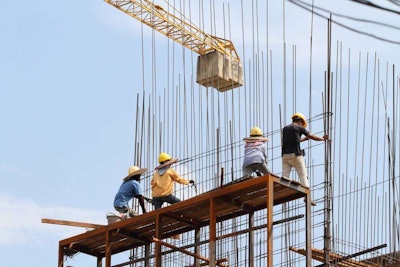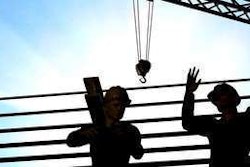
The architecture, engineering and construction industry has experienced an upward trend in the past year, and it could continue, SmartBlogs reports.
However, according to SmartBlog’s report, three economists warn of issues that could negatively affect the trend: the “fiscal cliff,” troubled state economies, tight lending standards and the Obama administration’s regulatory agenda.
Ken Simonson, chief economist at the Associated General Contractors of America, told SmartBlogs the fiscal cliff is the biggest threat to the current outlook, leading to “a $2 billion reduction in federal construction spending;” up to 66,500 architecture, engineering and construction jobs lost; and tax increases that would slow home and private nonresidential construction spending.
Other possible problems for public construction include the possibility of losing a mortgage-interest deduction, strained local and state economies and Congress’ lack of spending, Baker and Simonson noted.
Kermit Baker, chief economist at the American Institute of Architects, said housing starts are up 35 percent since 2011. Private residential construction, which led the housing starts, was up to a seasonally-adjusted 20.9 percent between 2011 and 2012.
Simonson said multifamily spending increased 49 percent in a year, a trend that could continue. Simonson told SmartBlogs he expects to see a 6- to 10-percent increase in total construction spending per year.
Bernie Markstein, chief economist at Reed Construction Data, told SmartBlogs he expects commercial construction to continue to improve. Baker said the Architectural Billings Index has started to recover, a trend that is likely to continue for the ABI.
Other boosts in construction include the oil shale boom, spending on private nonresidential work in the power sector and work on the Panama Canal.
Despite boosts in many construction sectors, spending on highways and roads; educational facilities; sewage, water and waste disposal; communication projects; and lodging, religious and conservation work decreased.









